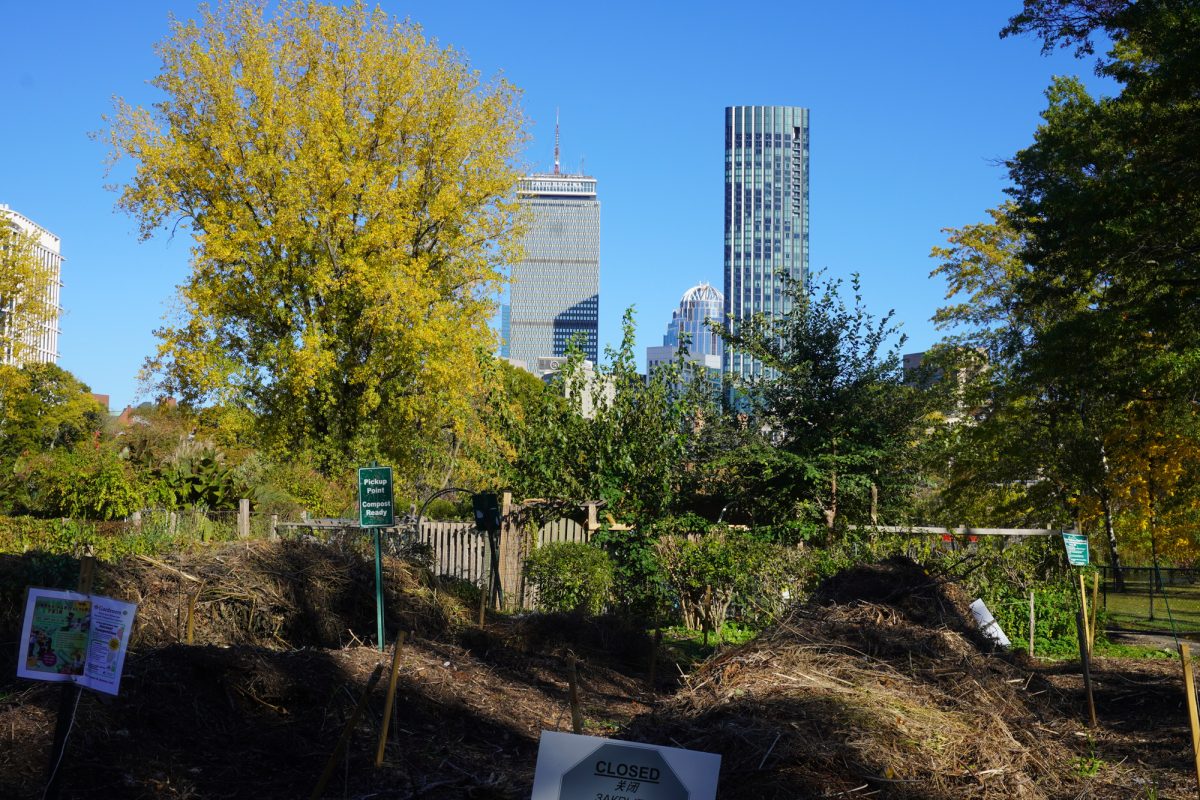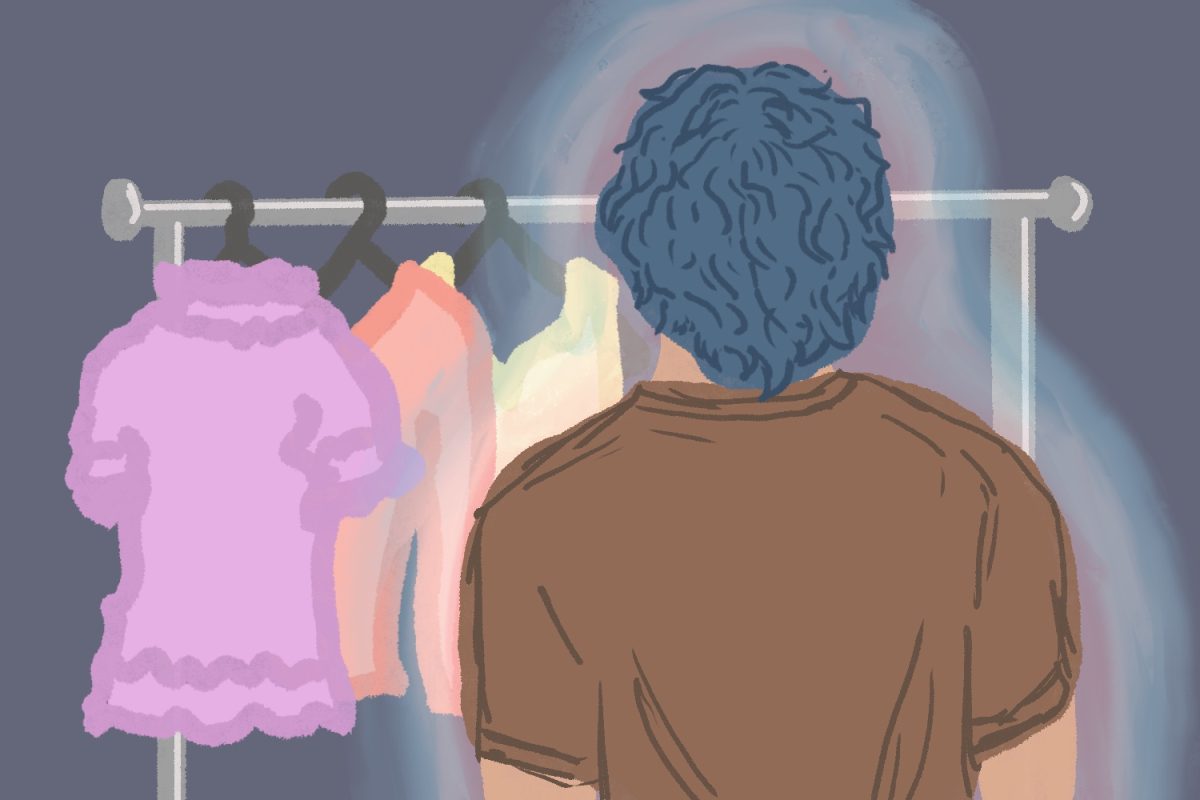It’s that time of year again when the temperature has dropped so low that Boston University students have adopted the informal uniform of Canada Goose jackets while sporting perpetually frozen expressions on their faces. The prospect of developing frostbitten ears on your way to class has made many pull out their beanies as well, myself included. Even though the beanie-mask combo provides useful anonymity when you inevitably run into your regrettable hookup from fall semester, it’s not exactly the height of winter fashion.
Luckily, TikTok’s knitwear-promoting, New York-inhabiting fashion caste has provided a new alternative to keep your ears from falling off this season— the balaclava.
If you’ve started fantasizing about honey-soaked filo pastry, I’m afraid I have some bad news. Far from a decadent Middle Eastern dessert, the balaclava is a face covering that vaguely looks as if its wearer cut a face hole out of a knitted sock and put it over their head.
I’ll admit, my first impression of the garment was that anyone who wore it would need a consultation with Bella Hadid’s facial surgeon if they still wanted to be considered attractive with it on. From the chunky knitted material to the awkwardly shaped face hole, I don’t exactly find balaclavas flattering.
That being said, I can appreciate the sense of rebellion and creativity they convey while still providing warmth. After all, 30 degrees is far too cold to be worried about getting scouted for America’s Next Top Model. Perhaps a shift from trying to look conventionally attractive towards freer experimentation with fashion is the change we need this winter.

Balaclavas originated in 1854 during the Crimean War when British and Irish troops wore them to fight in the freezing Russian winter. Over the years they became a symbol of liberation and revolt, eventually being reimagined for fashion in all sorts of bright colors and unique designs.
Whether populating brands like “Miu Miu” and “Givenchy,” or in more humble settings like “Urban Outfitters” and teenage girls’ TikToks, the balaclava’s post-Soviet, lovably hideous appeal has triggered both positive and negative reactions.
Though its debatable level of sex-appeal has been a major source of discussion, this new headgear hasn’t only been controversial for its appearance. Muslim influencers have pointed out the similarity between the “fashionable” balaclava currently praised by high fashion, and their own hijab which is often viewed as “backward.”
In a recent New York Times article, Muslim content creator Sagal Jama describes that, initially, she enthusiastically took part in the balaclava trend because the headgear’s modesty worked so well with her practice of wearing the hijab. However, Jama soon realized that although there was no difference in the amount of coverage between the two garments, “People are able to wear a balaclava and be perceived as trendy or cool, but a hijab can be seen as a symbol of oppression or political.”
According to the ACLU, 69% of hijab wearers have experienced some form of discrimination. These infringements range from being denied entry into public spaces to being physically assaulted and having the religious head covering be forcibly removed. This discrimination extends to policy as well, with France prohibiting minors from wearing the hijab in public in 2021.
And yet, when Kim Kardashian sported a balaclava — which has essentially the same level of modesty as a hijab — in her fully-covered 2021 Met Gala outfit, her choice was heralded as “challenging,” “thought-provoking” and “ambiguous.”
What is it that makes a glorified ski mask so much less threatening than a hijab? Is it the fact that its typical wearer is the white, feminine ideal? If I decided to throw my fashion ethics out the window and sport a balaclava would I, as a woman of color, be met with discrimination rather than a spot on Virgil Abloh’s vision board?
I’m inclined to think the answer would be yes.
A few years back, one of my family friends — an Indian woman — went out for a walk wearing a scarf wrapped around her head and ears for warmth. Though she is not Muslim, a group of men drove past her and violently yelled at her to “take off her hijab.”
Evidently, the debate for me about whether or not to sport a balaclava this season isn’t just about whether I still want to be considered reasonably attractive, but also whether I would potentially subject myself to a hate crime. I can’t even imagine how much bigger this burden is on Muslim women who cover their heads every day for their religion.
This is not to say no one should wear a balaclava. But whether you partake in the winter trend or not, I hope it opens your eyes to the experience of those who can’t simply take off their head covering when it’s no longer “fashion-forward.”























































































































easwar • Feb 3, 2022 at 10:05 am
This is very well written with just enough wit to make it interesting to read and yet not so frivolous as to blunt the otherwise serious message in regard to the disparity in how fashion is judged based on who is wearing the attire under consideration.